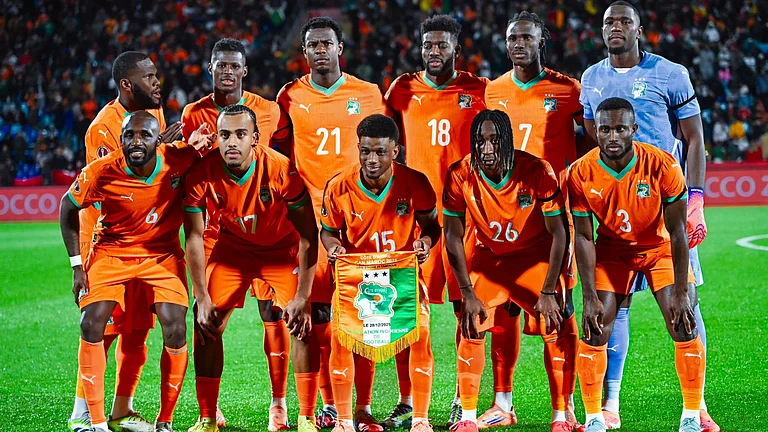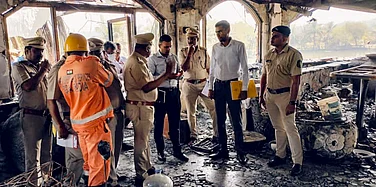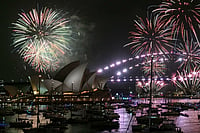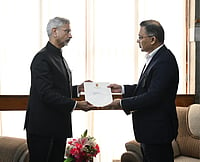WITH the dissolution of the Uttar Pradesh Assembly after fruitless attempts by various parties to cobble a majority, the stage has been set for a marathon political battle. Old allies and foes have begun to reassess their positions and gear up for a no-holds-bar red war.
But a big question mark lingers: will the Assembly elections be held along with the Lok Sabha polls, or earlier? Almost all major political parties in the state expect the two polls to be held simultaneously. With its Uttar Pradesh unit still in shambles, the Congress would not want early elections. If at all, it would like to delay Assembly polls even beyond the Lok Sabha elections. However, with no law and order problems in the state, the party would find it difficult to proffer a rationale for delaying the polls. Hence, the best bet for the Congress lies in ruling through the back door, and thereby bettering its prospects.
But that is easier said than done. For isn’t this the kind of scenario the Congress had aimed for when the 1993 Assembly elections were held after almost a year of President’s rule? The Congress had been relegated to a poor fourth position in the final tally. And this time the stakes are higher, as the voting for the Assembly polls could influence the Lok Sabha results if they are held simultaneously.
In terms of organisational ability, the main contenders are the BJP and Mulayam Singh Yadav’s Samajwadi Party (SP). As for the Bahujan Samaj Party (BSP), its five months in power have taken their toll. On paper at least, it is the BJP which looks the strongest. In the last Assembly elections, the BJP emerged as the single largest party, polling 33 per cent of the votes. And the victorious SP-BSP combine led by Yadav and Kanshi Ram polled 29 per cent of the votes. This time around, Yadav and Kanshi Ram will be adversaries, and their votes are bound to get split, working to the BJP’s advantage. The imponderables are the possibility of the National Front-Left Front combine throwing its weight behind Yadav and the BSP joining hands with the Congress to try and stop the saffron juggernaut.
But what is most interesting in the buildup to the next polls is that almost all the major players—the BJP, the SP and the BSP—have emerged somewhat sullied. The BJP’s moralistic pretensions have been exposed by the rank opportunism the party displayed in first propping up the Mayawati regime (with its attendant claims of being pro-Dalit), then pulling the rug from under her feet, and finally trying to lure her MLAs to patch together a majority.
The BSP, on the other hand, has proved that it is willing to team up with just about anyone in its pursuit of power. First it aligned with Yadav, then formed a government with BJP support; and when the BJP showed its true colours, it is believed to have even made overtures to the Congress to remain in power, even if only in a caretaker capacity.
As for Yadav himself, he has again come forth as an unscrupulous manipulator. Even as nobody was willing to give him a chance, he pipped the BJP to the post by staking his claim to chief ministership after Mayawati’s resignation and then got over 50 BSP MLAs who had till then been flirting with the BJP, to support his bid. In doing so, he not only managed to give the Centre an excuse to dissolve the Assembly, but he also re-emerged as the rallying force against the BJP.
Indeed, the manner in which Yadav managed to turn the tables against the BJP makes for a study in realpolitik. On the morning of October 24, the morale had been high in the BJP camp. With BSP and SP MLAs flock-ing or being lured to its doorstep, the prospects of forming a government in Uttar Pradesh appeared bright, God and Governor Motilal Vora willing. The SP, far short of the requisite majority of 213, was clearly a poor second in the race for power.
That was until Yadav swung into action and within 72 hours changed the picture dramatically. The BSP was a divided house and the BJP very much on the defensive. On the evening of October 24, Vora returned to Lucknow from Madhya Pradesh to find SP leader Ram Sharan Dass waiting for him at the Raj Bhawan. Dass handed over a two-page letter staking his party’s claim to form the government.
Five minutes later, at 4.15 pm, BJP leader Kalyan Singh received a call from a source at the Raj Bhawan, informing him of the SP’s move. Within the hour, BJP leaders rushed to Raj Bhawan, flourishing a one-page letter putting forward its claim to form the government. It was replete with typographical errors, with a hastily-added postscript claiming that the party had the support of 216 MLAs.
Having confused the issue with his rival claim and prevented large-scale defections from his party, Yadav’s next step was to woo the BSP MLAs away from the BJP by fair means or foul. He played on the apprehension that the BJP would be unable to guarantee tickets to BSP MLAs in the next election. (The BJP and BSP had been rivals in many constituencies in 1993, with the former losing in some by a few hundred votes.)
So caught up were the BSP MLAs in their negotiations with the BJP and the SP that when BSP chief Kanshi Ram flew into Lucknow on October 24, barely eight legislators, including Speaker Barkhu Ram, came to meet him. Annoyed, he flew back to Delhi. Erstwhile minister in the Mayawati government, Ram Lakhan Verma, continued his flirtation with the BJP even while issuing a statement of solidarity at Mayawati’s behest. It was a different matter altogether that Verma finally went over to Yadav’s side, and that his head was one of the first to roll after the dissolution order. He was expelled from the BSP along with four other leaders, including former state BSP chief Jang Bahadur Patel. The BSP’s loss was clearly becoming the SP’s gain.
Kanshi Ram appeared curiously indifferent to the events in Uttar Pradesh, jetting between Delhi, Calcutta and Jammu even as the party split. A helpless Mayawati pleaded "ill health" and retired to her palatial bungalow, emerging briefly to expel rebel BSP members. These events have naturally cast a dampener on the BSP’s Savdhan Yatra, the first phase of its Lok Sabha campaign which is scheduled to start next month.
So it is back to the dusty campaign trail for Uttar Pradesh politicians. Although no one expects elections to be called immediately, politicians have little choice but to go back to beg the electorate for yet another chance. As far as the common man is concerned, he will not be able to voice the familiar complaint that the politician comes to him only once in five years. For, this will be the fourth Assembly election in Uttar Pradesh in seven years.


























